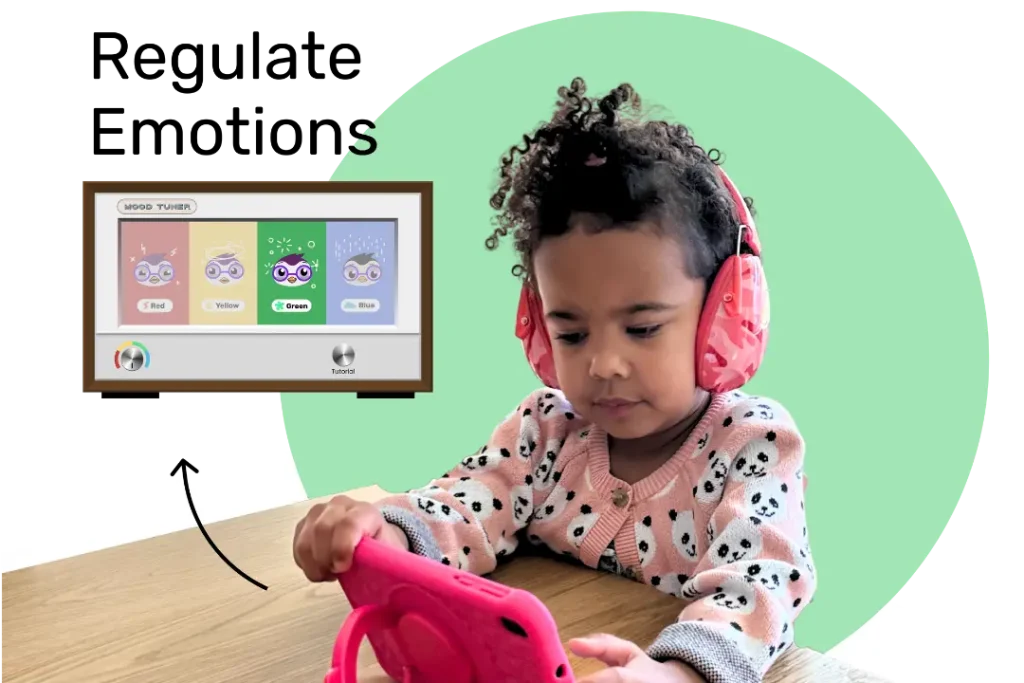Navigating the challenges of childhood emotions can often feel overwhelming for parents. Yet, every child, regardless of their background or abilities, has moments of frustration and anger. Fortunately, understanding and managing these emotions is within reach. This article offers practical, step-by-step strategies for parents to better understand triggers, teach self-regulation, and foster emotional intelligence. Let’s dive in and explore these tools together.
Table of Contents
Step 1: Understand the Triggers
Firstly, let’s talk about triggers. Triggers are like the match that lights the fuse. It could be sensory overload, a change in routine, or frustration from being unable to express themselves effectively. Recognizing these triggers is the first step in understanding how to manage anger in your child. Why is my ADHD Child So Angry?
Here’s a handy tip: Keep a ‘trigger diary.’ Note down instances when your child gets angry and the events leading up to it. Over time, you’ll start to see patterns. This can be a game-changer in preemptively managing situations that might lead to outbursts.

By the way— Goally’s Kid’s Tablet has an app called Mood Tuner to help kids identify & regulate their emotions in a fun way. Here’s a list of the 15 other top skill-building apps we recommend:
Read more: Kids With Anger Issues | Parents Guide
Step 2: Teach Self-Regulation
Now that we’ve identified the triggers, the next step is teaching your child how to manage their reactions. This is where Goally can be a valuable tool. With its visual schedules and task timers, Goally can help your child gain a sense of control and predictability, reducing instances of anger outbursts.
Moreover, consider introducing techniques like deep breathing exercises, counting to ten, or using a stress ball. Remember, it’s about equipping them with the tools to control their emotions, not suppress them.
Step 3: Foster Emotional Intelligence
Emotional intelligence is like the secret sauce in managing anger. It’s about understanding, using, and managing your emotions positively. Please encourage your child to express their feelings healthily. You could use emotion cards or social stories to help them understand and articulate their emotions better.

Read more: Emotional Intelligence for Kids
Goally’s visual aids can be a great resource. They can help your child identify and express their feelings, fostering emotional intelligence and, ultimately, helping manage anger more effectively.
Step 4: Practice Consistent Discipline
Discipline is not about punishment but about teaching consequences. Consistent discipline helps your child understand their actions’ repercussions, promoting self-control. But remember, discipline should always be paired with empathy and understanding.
Here’s a quick tip: Instead of focusing on what they did wrong, highlight what they can do better next time. This approach teaches them about consequences and encourages problem-solving and resilience.
Step 5: Model Appropriate Behavior
Lastly, let’s remember that kids often mirror the behavior of adults around them. So, ensure you’re modeling appropriate responses to anger and frustration. After all, actions speak louder than words.
For instance, next time you’re stuck in traffic and running late, instead of expressing frustration, talk through your feelings and the steps you’re taking to calm down. This shows your child that feeling angry is normal and provides a healthy blueprint for managing these feelings.
Goally | Kid’s Tablet for Building Emotional Regulation Skills
Is your child struggling with understanding and managing their emotions? Goally teaches emotional regulation skills in a fun and interactive way!

The Mood Tuner app encourages kids to look inwards and identify their feelings, helping them understand what’s going on inside. Once they’ve recognized their emotions, they can choose from a variety of exercises designed to help them self-regulate and find their balance.
Managing anger in kids is a journey, not a destination. It requires patience, understanding, and a lot of love. But with these steps, you’re well on your way to helping your child navigate their emotions effectively. You now know how to manage anger in your kid. So, take a deep breath, hold your child’s hand, and step confidently into this journey. You’ve got this!
FAQ’s About How to Manage Anger
What are visual schedules and how do they help manage anger? Visual schedules use pictures and symbols to represent daily activities, helping kids anticipate and prepare for events, thus reducing potential frustrations and outbursts. How do emotional regulation apps assist in managing childhood anger? Emotional regulation apps offer interactive tools and prompts that help children recognize, understand, and manage their emotions in real-time. Why are rewards effective in teaching kids to control anger? Rewards motivate and reinforce positive behavior, encouraging kids to make better emotional choices over time. Can recognizing triggers prevent anger outbursts in children? Yes, identifying and understanding what triggers a child's anger can allow for proactive strategies, reducing the frequency and intensity of outbursts. How can nurturing emotional intelligence help manage anger in kids? Cultivating emotional intelligence equips children with self-awareness and coping mechanisms, enabling them to better understand and regulate their emotional responses.

Goally
We help parents teach their kids life skills, like doing bedtime and morning independently. Backed by science, we incorporate evidence-based practices and expert-informed designs in all of our apps and content.





